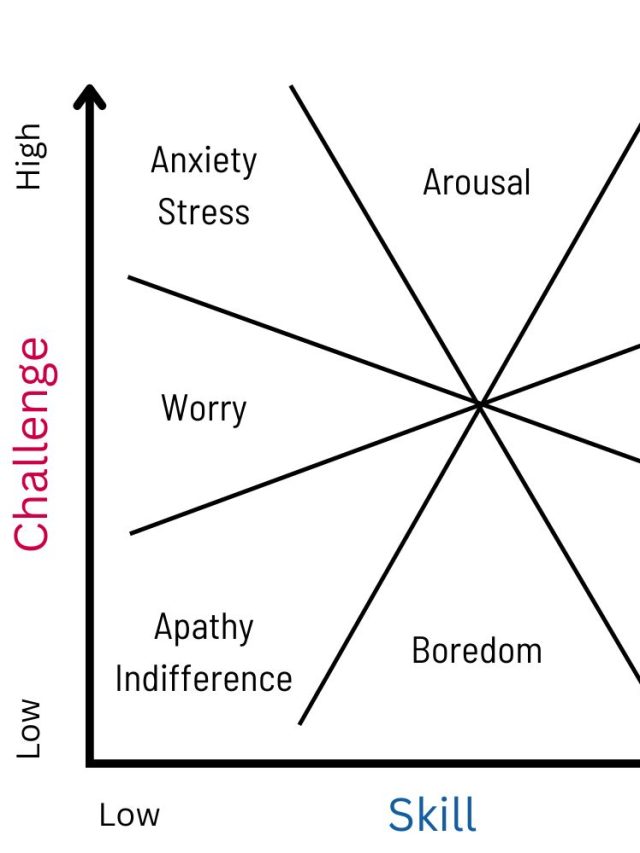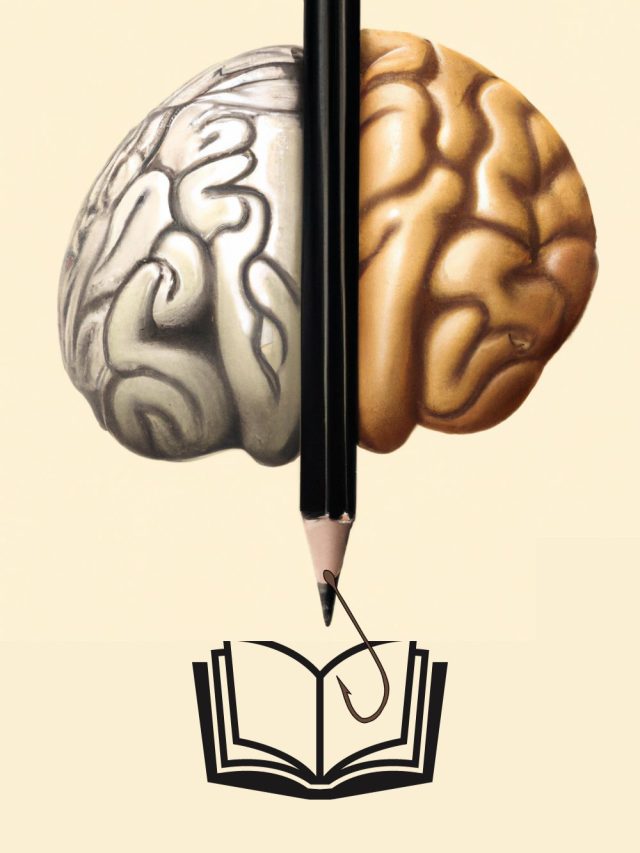Our reality is partially made up of our perception of the world. This perception occurs through our thoughts, which may or may not represent the outside world correctly. And when we consider mental health, it’s those perceptions that become problematic. One such problem is “all-or-none” thinking, which is a type of cognitive distortion.
- Cognitive distortions
- All-or-none thinking
- Problems caused by all-or-none thinking
- Types of all or none thinking
- All-or-none thinking in relationships
- All-or-none thinking in parenting
- All-or-none thinking while studying
- All-or-none thinking in productivity
- All-or-none thinking as an employer
- All-or-none thinking in social engagements
- Reducing all-or-none thinking
- Sources
Cognitive distortions
Rigid patterns of perception that bias our sense of reality are called “cognitive distortions”. They are distortions because what we experience is different and warped compared to what our senses should tell our brains. And, because of the distortion, our senses may even neglect certain information that others consider obvious.
In the simplest sense, if your senses say you see a circle, your brain interprets it as an oval, and you believe it’s an oval. A cognitive distortion changes facts into misinformation inside the mind.

To demonstrate all or none thinking, imagine you see a color spectrum from red to violet. But instead of acknowledging the entire range of colors, you believe there are only 2 colors.
All-or-none thinking
All or none thinking (aka dichotomous thinking, polarized thinking) is a common cognitive distortion that makes us think in extremes. Dichotomous thinking makes our thoughts black and white where we perceive events as either-or judgments – “I’m either successful or a total failure.” & “The date was the best date ever or worst date ever.” There are no in-between judgments or perceptions.
These thoughts are also accompanied by related thoughts with words like always and never. For example, “You always dismiss what I am thinking. You never think about me.” All or none thinking makes us dismiss all events and draw absolute “final” conclusions about something based on very little evidence.
All-or-none polarized thinking makes us judge people or ourselves as either totally good or totally bad. Similarly, events will either be great or a disaster.
Problems caused by all-or-none thinking
All-or-none thinking is typically addressed during CBT (cognitive behavioral therapy) to help clients reduce negative thinking, anxiety, relationship problems, unhelpful attitudes, etc.
It appears in social anxiety[1], depression[2], schizophrenia[3], and sub-clinical mental health problems like playing blame games, victimizing, holding unrealistic standards, procrastination, dismissing effort, etc. For some problems like obsessive-compulsive disorder, cognitive distortions can impair emotional regulation[4], which, in turn, facilitates OCD.
Demotivation often comes from all-or-none thinking. For example, if I believe I can’t study 100% of my exam syllabus, I will give up because studying 80% of my syllabus isn’t good enough. If you believe you can’t submit your work in time, you might lose the motivation to even begin because you assume you’d fail. In most work scenarios, real-time changes to a project allow enough leeway to finish work. So trying to finish it, regardless of your belief is almost always a good idea.
Cognitive distortions don’t just appear in internal thoughts. They appear in text messages too[5].
Related: 6 ways to improve negative self-talk
Types of all or none thinking
Looking at the range of examples people with mental health problems go through, I consider 3 main types of all or none thinking.
- Polarizing
- Not categories
- If-certainty thoughts
Polarizing is the classic form of black/white thinking. Either something is perfect, or it’s fully broken. Either you are politically left or politically right. Either you are my friend or my enemy. This form of thinking is perceiving the world in 2 extremes. This category is at the “observation level“.
Not categories are a selective pattern of attention. Consider furniture in your house. You can label all furniture units by their name and classify them. But you can also classify them as chairs and not chairs. While technically correct, all furniture will always be one of 2 categories – chair or not a chair. This type of all-or-none thinking warps reality by dismissing variety and details in some way. This category is at the “conceptualizing level“.
If-certainty thoughts are judgments where certainty or perfection is at the center. With this type of all-or-none thinking, one would fail to understand risk minimization or succumb to perfectionism. One would dismiss a hand sanitizer as useless if it doesn’t kill 100% of germs. Either something is perfect, or it’s never good enough. This is a problem in productivity and anxiety. In productivity hustles, people rarely assume hard work is good enough. Either they go all out, or they think they are a failure. Similarly, in the case of anxiety, minimizing risk is never good enough if it is not fully eliminated. This category is at the “judgment and evaluation level“.
All-or-none thinking in relationships
- “If they forget our anniversary once, they don’t truly love me.”
- “If we argue about something, it means our relationship is doomed.”
- “If they don’t agree with me on everything, we’re not compatible.”
- “If they don’t show affection publicly, they’re ashamed of me.”
- “If they can’t read my mind, they don’t understand me at all.”
All-or-none thinking in parenting
- “If my child gets a B grade, I’m failing as a parent.”
- “If my child throws a tantrum, I’m a terrible disciplinarian.”
- “If I can’t attend every school event, I’m not supportive enough.”
- “If my child dislikes a meal I cooked, I’m a bad cook overall.”
- “If my child isn’t the best at everything, I’m not raising them well.”
All-or-none thinking while studying
- “If I don’t get an A on this test, I’m a complete failure.”
- “If I can’t understand one concept, I’m not cut out for this subject.”
- “If I don’t study for hours, there’s no point in studying at all.”
- “If I make a single mistake in my essay, I’ll get a terrible grade.”
- “If I didn’t finish the entire textbook, I’m not prepared for the exam.”
All-or-none thinking in productivity
- “If I can’t complete my to-do list, I’m a completely lazy person.”
- “If I make one mistake, I’m terrible at this job.”
- “If I take a short break, I’m unproductive and wasting time.”
- “If I miss a deadline, I’ll never be successful in my career.”
- “If I’m not constantly busy, I’m not achieving anything.”
All-or-none thinking as an employer
- “If an employee takes a personal day, they’re not committed to their job.”
- “If someone makes a minor error, they’re not fit for this role.”
- “If an employee disagrees once, they’re not a team player.”
- “If an employee doesn’t volunteer for extra tasks, they lack ambition.”
- “If an employee can’t handle one project, they’re not competent.”
- “If I don’t get invited to every event, nobody likes me.”
- “If I stumble over my words, everyone thinks I’m unintelligent.”
- “If I’m not the center of attention, I’m invisible to others.”
- “If someone cancels plans, they’re avoiding me purposely.”
- “If I’m not always witty, people find me boring and uninteresting.”
Reducing all-or-none thinking
1. Distancing: Distancing is a therapy technique in which a person suffering from negative thoughts and anxiety tries to separate themselves from their thoughts. A common practice is to think in the 3rd person or use your own name. For example, after identifying an all-or-none thought pattern, the person reframes that thought using the prompt – “Does Aditya really think it’s black or white and nothing in between?” or “He is analyzing the situation too simplistically”. This form of “psychological distance” dilutes the emotions involved, so the thought becomes more flexible to change. A similar approach called “The Batman Effect” helps people go beyond their cognitive limitations.
2. Yes, but… : Yes, And…[6] is a common improv theatre technique. The improviser takes any prompt like “Do you want to skydive,” and the responder says “Yes, And… I’d love to do it over the ocean”. The technique can be flipped into “Yes, but…”. That can make a cognitive distortion’s conclusion invalid. For example, “If I don’t get likes on social media, I must be unlovable. Follow this up with “yes, but… that isn’t really true because I don’t even have reach on social media.” Yes, but… can force the brain to explore new conclusions. All one has to do is, find 1 way to continue “yes, but…”
3. Metacognition: Metacognition refers to thinking about thinking. This means analyzing your own thoughts and introspecting one’s behavior after it has happened. Metacognition allows a person to self-reflect and rework their all-or-none thoughts. In mental health problems like depression, cognitive distortions go hand-in-hand with metacognitive problems[7]. So it’s possible a patient thinks about their experiences and over many days of rumination arrives at a cognitive distortion like black/white thinking (which is a symptom of depression). In other cases, a black/white thinking can lead to frustration, disappointment, and anger.
4. CBT worksheets: CBT worksheets are a popular way to change thought patterns because they essentially involve identifying that cognitive distortion, writing it down, and then rewriting it in a different way.
Here’s a link for good CBT worksheets[8].
5. What would XYZ think?: People simulate models of other people using the “theory of mind” network of neurons in the brain. They create tiny simplified models of others based on their experience. When a person tries to use empathy to figure out how someone else will think, they will activate that person’s model and use it to filter their own thoughts. This makes it possible to have a completely different point of view. So during all-or-none thinking, it is possible to use empathy and adopt someone else’s judgment about a scenario.
6. Latitude of acceptance: The latitude of acceptance[9] is an idea that people have a range of believable thoughts. Thoughts outside that range are unbelievable, so they are rejected. In black-and-white thinking, a person may conclude that if he doesn’t score 100% on a test, he is a failure. In such a situation, being ok with 50% is a clear reason to feel like a failure. 50% is outside the latitude of acceptance. But 85% might not be. So the person tries to make peace with the idea that 85% is good enough. This approach is excellent for persuading people when they are misinformed about science too.
Like I tell my friends, half-seriously – OR is an overrated concept.
Sources
[2]: https://link.springer.com/article/10.1007/BF01190066
[3]: https://europepmc.org/article/med/504512
[4]: https://www.behavsci.ir/article_133376.html
[5]: https://ps.psychiatryonline.org/doi/abs/10.1176/appi.ps.202100692
[6]: https://dl.acm.org/doi/abs/10.1145/1640233.1640253
[7]: https://link.springer.com/article/10.1007/s12144-022-03026-w
[8]: https://www.therapistaid.com/therapy-worksheet/cognitive-distortions
[9]: https://psycnet.apa.org/record/1973-02326-001

Hey! Thank you for reading; hope you enjoyed the article. I run Cognition Today to paint a holistic picture of psychology. My content here is referenced and featured in NY Times, Forbes, CNET, Entrepreneur, Lifehacker, about 15 books, academic courses, and 100s of research papers.
I’m a full-time psychology SME consultant and I work part-time with Myelin, an EdTech company. I’m also currently an overtime impostor in the AI industry. I’m attempting (mostly failing) to solve AI’s contextual awareness problem from the cognitive perspective.
I’ve studied at NIMHANS Bangalore (positive psychology), Savitribai Phule Pune University (clinical psychology), Fergusson College (BA psych), and affiliated with IIM Ahmedabad (marketing psychology).
I’m based in Pune, India. Love Sci-fi, horror media; Love rock, metal, synthwave, and K-pop music; can’t whistle; can play 2 guitars at a time.










